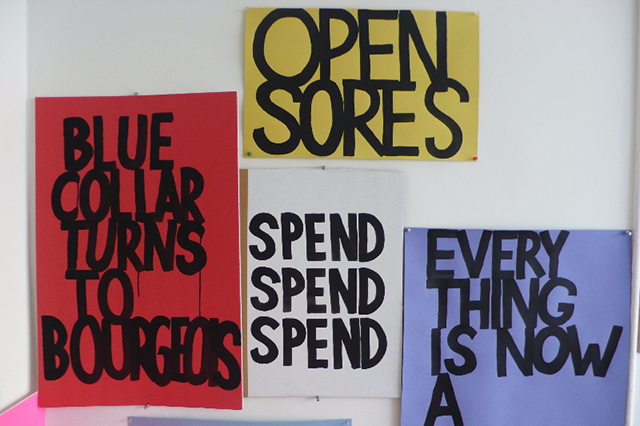Young artists have long been drawn to San Francisco’s Mission District for many reasons, including its proximity to art schools and a progressive scene that spans film, visual art, performance and activism. In the 1990s, a multi-faceted art community developed in the neighborhood that would soon make a massive impact on the contemporary art world.
In 2002, San Francisco art critic Glen Helfand coined the term “Mission School” to describe the common thread connecting this unique set of artists working in or around the Mission at the time. It is considered by many to be the most significant San Francisco art movement of the late 20th century. Many of the artists involved who became internationally known agree the community wasn’t limited to visual art in one neighborhood and that it included thousands of people, rendering the “Mission School” label problematic, though convenient for journalists and the art market.

A new way of looking at art was germinating in the ’80s and ’90s, one that was influenced by street culture and folk sensibilities, and young artists in the Mission pushed open this new door to the contemporary art world. The pervasiveness of the Internet was rapidly growing in mainstream culture, increasing notoriety for artists at an accelerated rate. San Francisco, with its long history of progressive politics, nurtured artists with populist values, and the sudden commercial attention left some conflicted. In 1996, funding for the National Endowment for the Arts was slashed dramatically due to conservative opposition to the support of controversial projects. The loss of public funding for artists resulted in reliance on commercial sales to sustain full-time careers.
San Francisco, and particularly the Mission District, has seen a cycle of major cultural shifts, and the effects of the early dot-com boom have grown exponentially. The city is currently undergoing another severe social and economic sea change; artists and long-time members of many communities have been forced out of the city for financial reasons. While the spirit and energy of this still-influential contemporary art movement remains relevant for artists, the accessibility of the city wanes. On the occasion of SFMOMA’s Fertile Ground: Art and Community in California exhibition at the Oakland Museum, we spent some time reflecting on a golden age — one that launched a number of successful careers and left a legacy of good vibes.
This video was produced in partnership with SFMOMA in connection with the exhibition Fertile Ground: Art and Community in California, on view September 20 – April 12, 2015 at the Oakland Museum of California.

